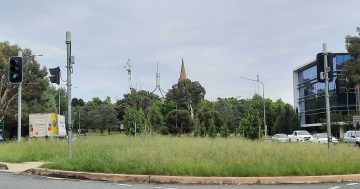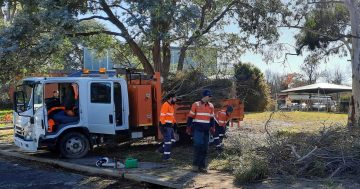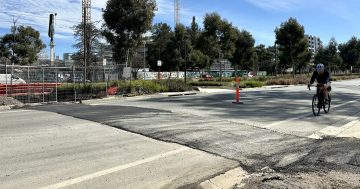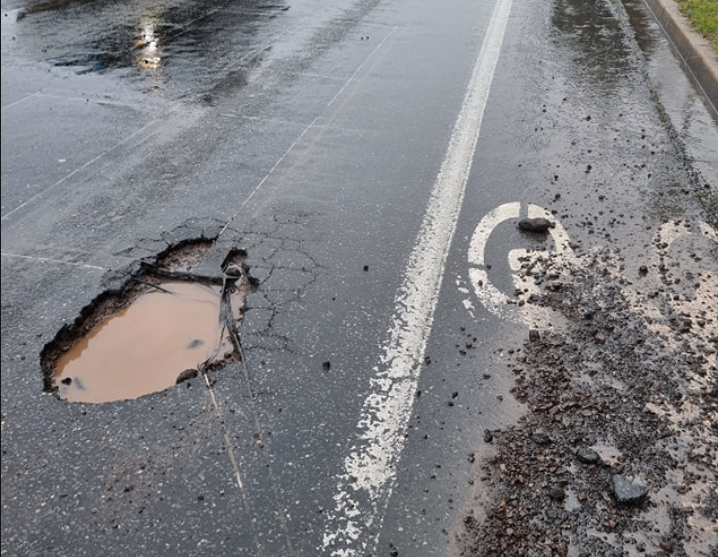
This crater on Melrose Drive in Phillip is one to be avoided. Photo: Facebook.
The latest wave of wet weather is proving a perfect storm for City Services crews battling to stay on top of crumbling roads and spring grass growth.
Social media has been ablaze with comments about the number and sheer size of the potholes appearing in roads across Canberra as the rain refuses to let up.
Potholes open up as water seeps into cracks and erodes the base layer of the pavement, and if a vehicle hits a big enough one tyres and worse can be damaged.
A post on Canberra Notice Board on Thursday morning observed five cars on the side of the GDE and Parkes Way as drivers changed tyres.
“Surely we can start a class action. These roads are not being maintained. I had to get one of my rims re-rolled due to a pothole. Don’t know why our cars have to pass roadworthy when the roads aren’t car worthy!” the post said.
The government does consider requests for compensation and this year it has paid out 50 claims at a cost of $43,148.96, with the average claim worth about $860.
The bill has increased steadily since 2020 when there were just 16 claims ($9098), while last year 40 claims totalled $39,024.85.
The rain is not only wreaking havoc with the roads but preventing crews from repairing potholes.
A government spokesperson said crews would be proactively assessing the road pavement until it was able to be repaired once the rain stops.
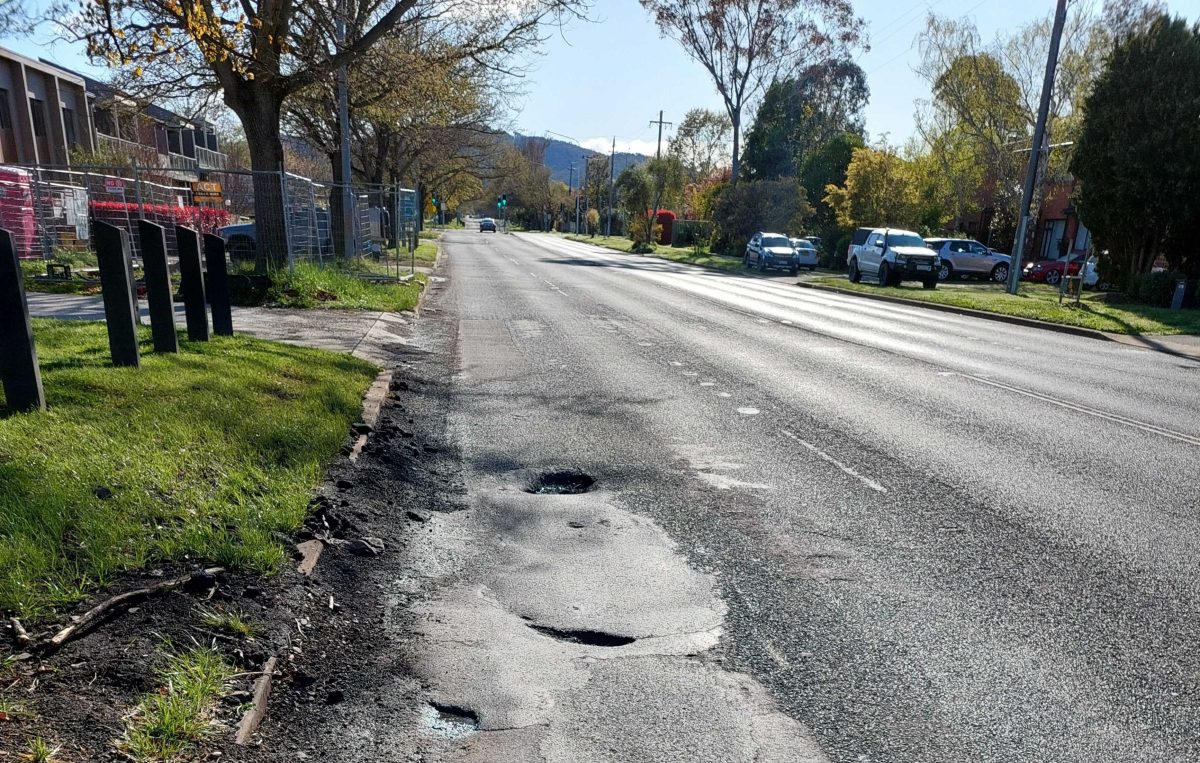
A trap for drivers is waiting on Majura Avenue, Dickson. It appears to have been repaired multiple times. Photo: David Murtagh.
The spokesperson warned drivers to keep a lookout for potholes and take into account the weather.
“Canberrans should drive to the conditions and report any potholes to Fix My Street so teams can quickly respond to any areas that pose an immediate safety concern,” the spokesperson said.
“We are allocating all available resources to identify, assess and respond to road safety hazards. Repairing potholes in wet weather is challenging as the asphalt mix doesn’t settle.
“Wherever possible we are applying temporary patching particularly on key arterial roads.”
Roads ACT says preventative resealing of the pavement is the most cost-effective method of maintaining good road conditions.
The government is currently auditing the road surface condition as part of a new trial program involving rubbish trucks fitted with artificial-intelligence pothole detection technology. There is no report on how successful this has been yet.
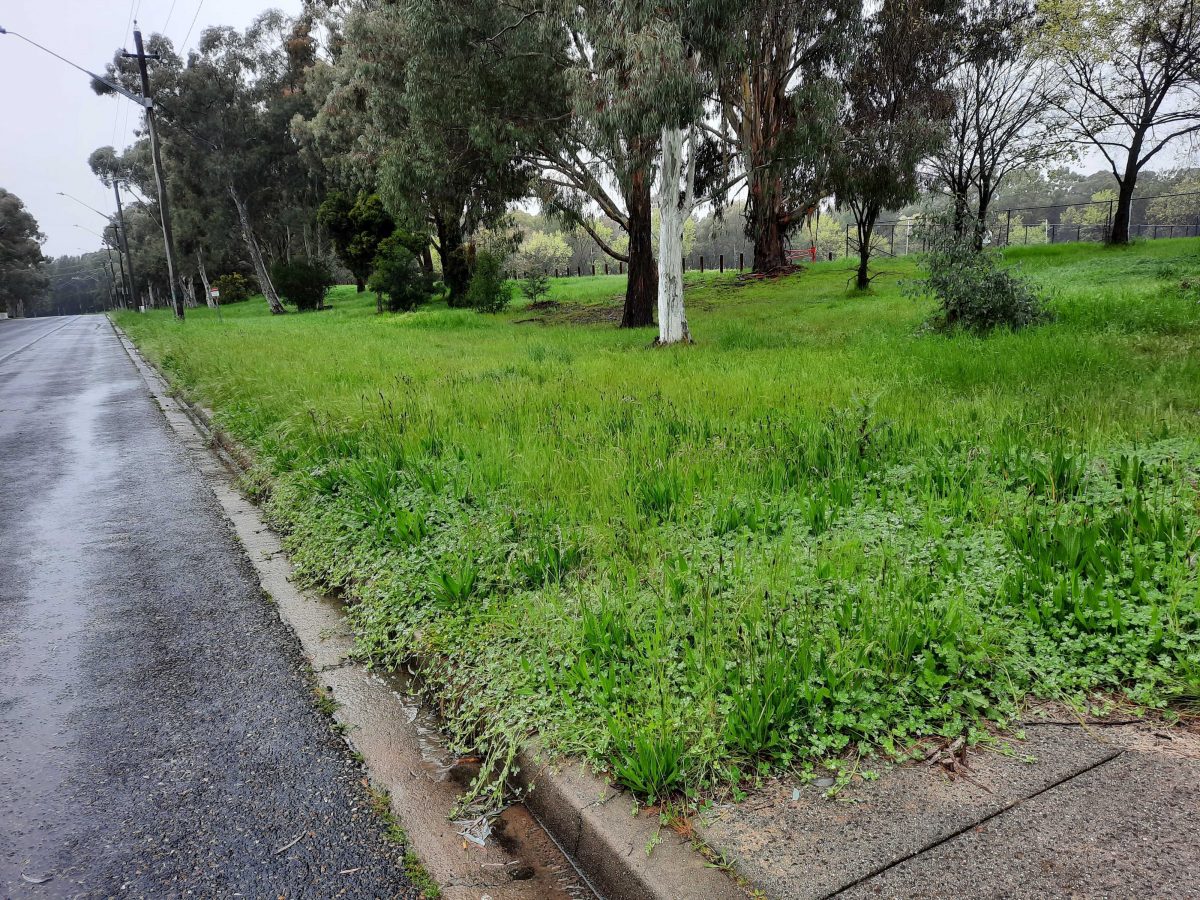
Verges like this on Streeton Drive in Stirling are getting away again. Photo: Ian Bushnell.
The wet is also keeping grass cutting crews sidelined, at what is traditionally the fastest growing period of the year.
The government expected the season to be a tough one and allocated $1.2 million through the budget to pilot a new 10-person rapid response mowing team.
“We did this in anticipation of yet another La Nina weather system and are prepared to keep our city looking clean and tidy once the current rain event subsides,” the spokesperson said.
“This means our mowing fleet now has 81 vehicles in the updated team, with each full mowing pass covering an average of 4907 hectares.”
The community can report an area in need of attention from the rapid response mowing team by completing an online form at Fix My Street.












